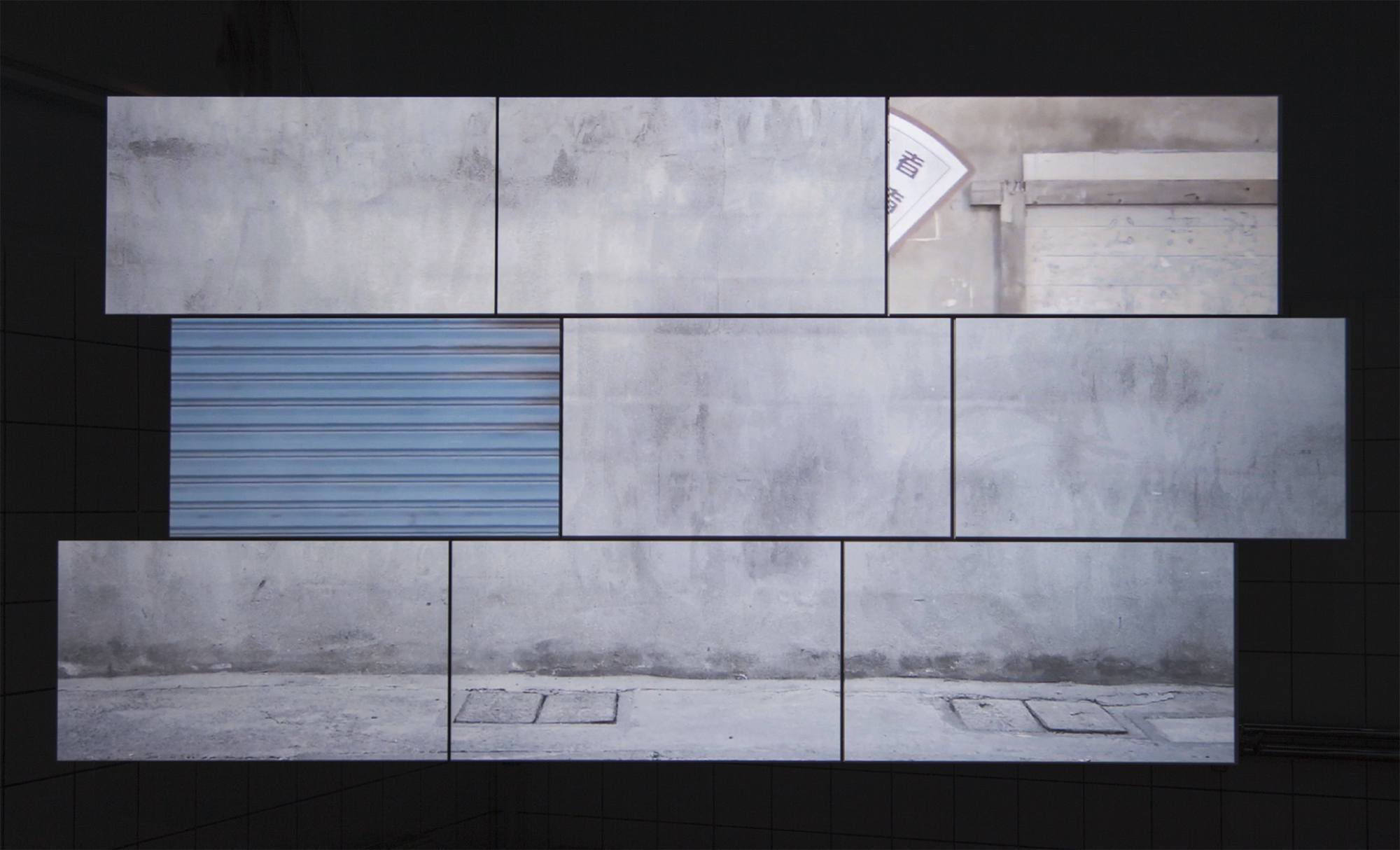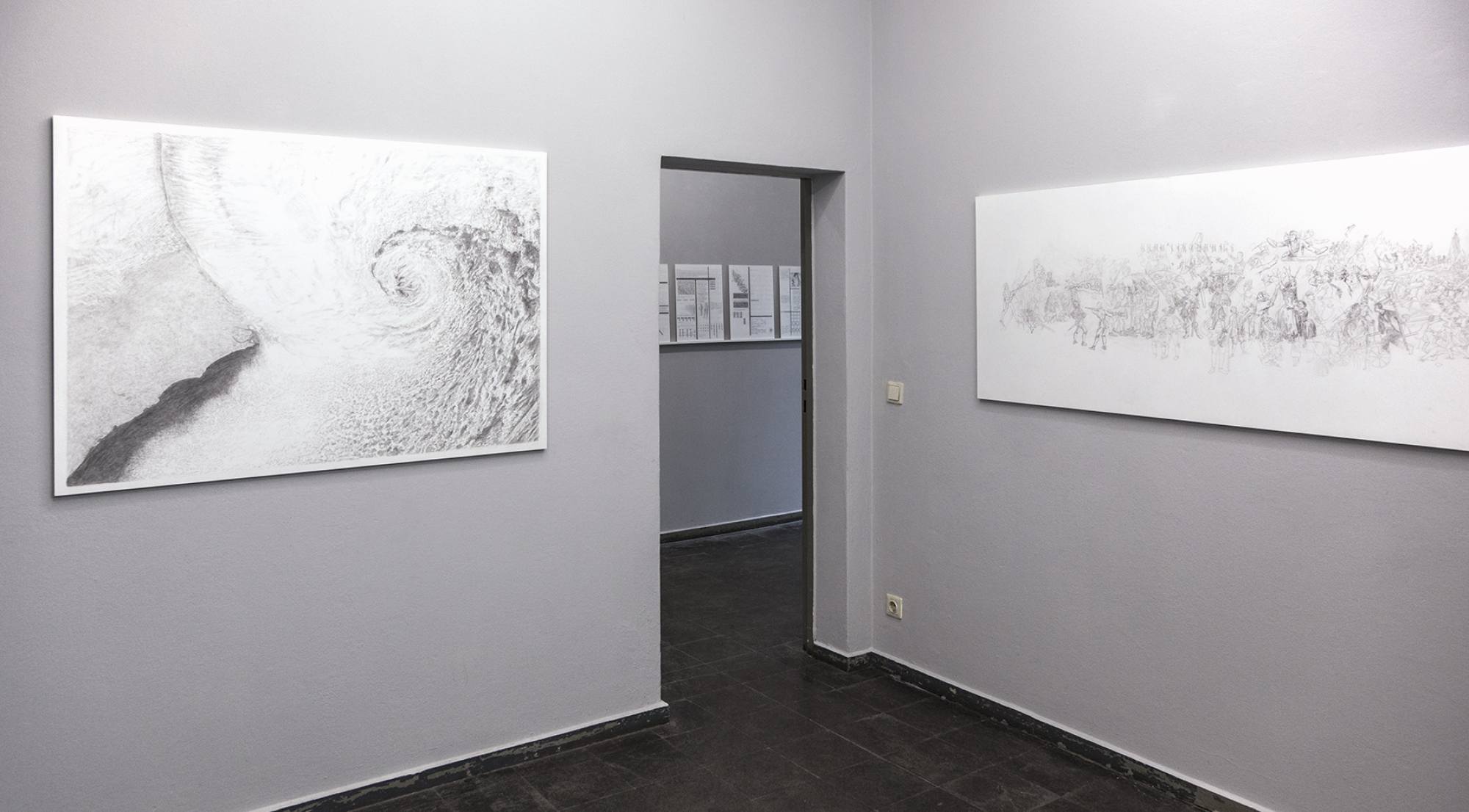












Timo Herbst & Marcus Nebe
Strong Feelings
Soft Opening Fri 10 Sep 2 - 9 pm
Guided Tours and artist talk
with Timo Herbst & Marcus Nebe
Sat 11 Sep and Fri 17 Sep at 4 - 6 pm
during Berlin Artweek:
Thu 16 Sep - Sun 19 Sep 2 - 9 pm
regular:
10 Sep - 2 Oct 2021
wed - sat 2 - 6 pm
Frontviews at HAUNT
first floor
Kluckstraße 23 A / yard
D - 10785 Berlin
Please follow the 3 G rule (either vaccinated, negative tested within the last 24 hours, or cured of COVID- 19) to enter the exhibition building.
IG @frontviews_berlin
FB FrontviewsBerlin
with the essential support of Berliner Senatsverwaltung für Kultur und Europa, Deutscher Künstlerbund, Kunstfonds Dresden and Kulturstiftung des Freistaates Sachsen
Strong Feelings
When things begin to get loud and agitated, when tumult and protest start to emerge, when people rush into the streets and confront the police or other opponents, when resistance meets resistance and the exception breaks out, in which no one possesses control over the situation any longer, then it’s not just a moment when on all sides emotions are at their peak — there are cameras present the entire time. And so the power struggle over the production of images starts to take its course.
Timo Herbst and Marcus Nebe situate the visitors of their exhibition in the middle of moments, in which people are wrestling over the representations that will ultimately shape a political event. The visually and emotionally moving images of participants interacting with one another, the waving of flags, the scenes of violence: such images determine the public narrative of who was where, why they did what they did, and against whom — and who might have won.
However, it is not these narratives that we see in the 5-channel video installation Play by Rules, but rather the motors behind the production of such narratives: the image producers with their technical tools, who stand within such events and lead the fight over the creation of these images while refraining from shining the spotlight on themselves and their own bodies, gestures, and activities. TV channels, live reporters, bloggers, activists, agitators, provocateurs and critical documentarists struggle to assert their respective perspectives and seek the sovereignty of interpretation.
Media corporations, public broadcasters, social media networks and numerous peer groups and influencers compete not only over the moment itself, but for a piece of history and the way this moment will be written in sound and image. This is the stage of the conflicts of our time, and with their video installation, Herbst and Nebe locate us within the tumultuous moment when the images of such situations are created, images from which public opinion will be produced.
In recent times the struggle for interpretative sovereignty has increasingly manifested during the pandemic as literal attacks of private individuals against journalists, disguised as claims of freedom of expression exercised on the streets as well as in private digital media spaces which function as a rebellion against public media, perceived by some as supposedly manipulative and propagandistic. Nearly as if an eye for an eye, a tooth for a tooth. In Play by Rules this contemporary experience also shines through even though the work was created before the pandemic.
This theme in the exhibition is reinforced by the drawings of Timo Herbst, which deal with the visual history of public dissent and its (self-)staging, either by working through specific, individual gestures like a protest gesture made with the hand, or through the ways that crowds of people in their tense groups dynamics were referenced in history. The drawing Ephemera, for example, refers to historical images intended for a single or short-term use, such as prints from daily newspapers, posters or advertising. Together with the historian Duane Corpis, Herbst researched historical images of protests and states of emergency as source material to draw an interwoven chain of bodies, which visually explores the self-staging and memory of dissent in public space.
In a third work, the 9-part video projection called Shanghai Cables (Pt. 2), the focus finally shifts onto the influence exerted by the exhibition visitors on the image process itself. The viewers themselves become a tangible part of the dynamic that allows images to be rendered visible, disrupted, or at the very least altered. The sequence and combinations of the video images, which document the process of gentrification in Shanghai’s Old Town, change according to the movements of people within the space of the exhibition.
The claim to participate in the process by which we create images of what the world and society are to us, has long become a matter concerning many (quite varied) people as a result of digitalization and social media. As a result, the always, already conflictual process of negotiating representation — by showing what is and what was — has become collectivized anew. This process not only concerns us all, we are already a part of it.
Alexander Koch
related links
